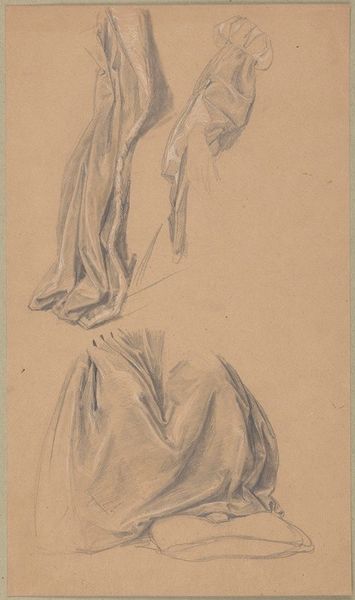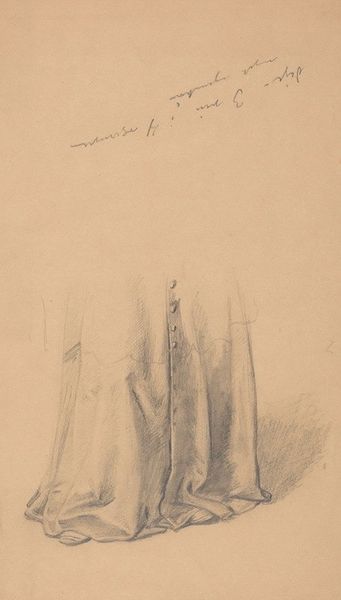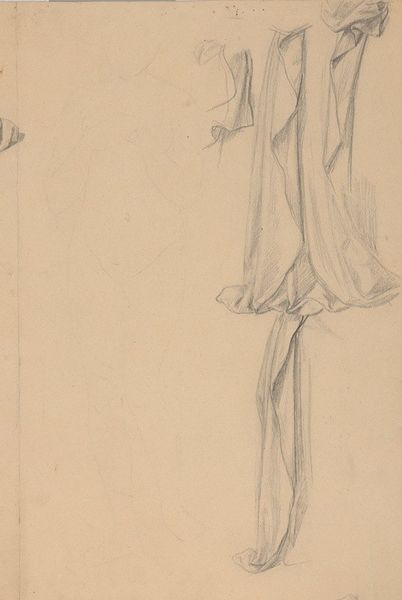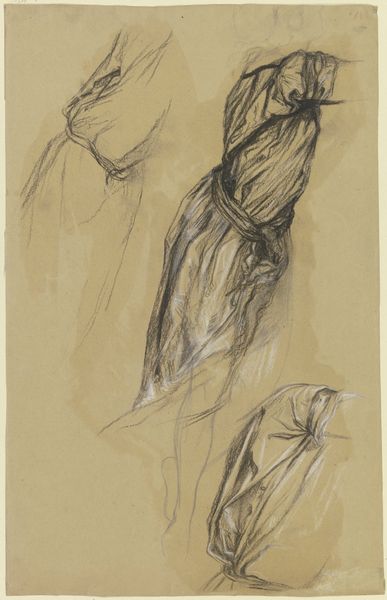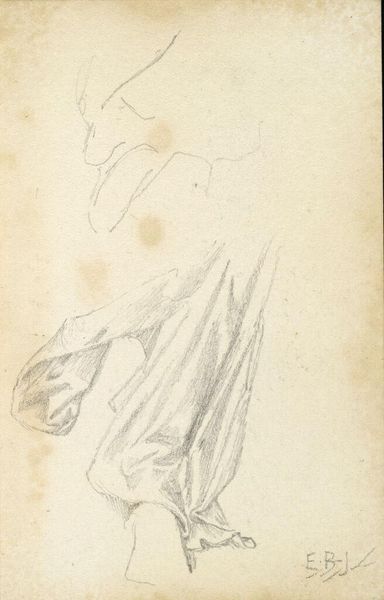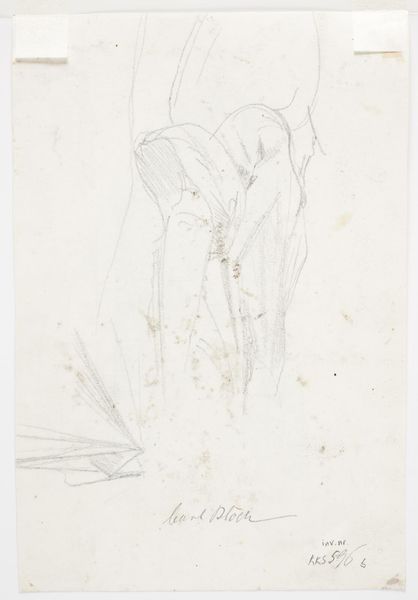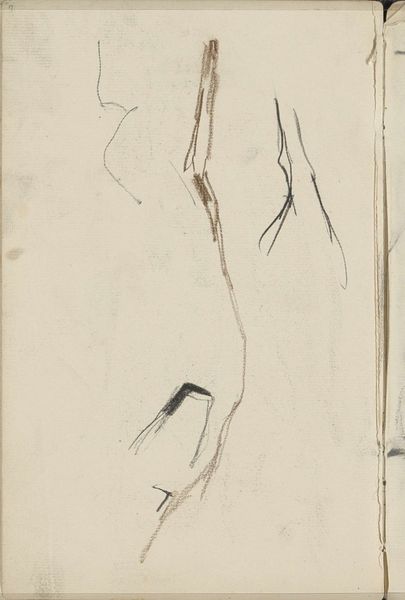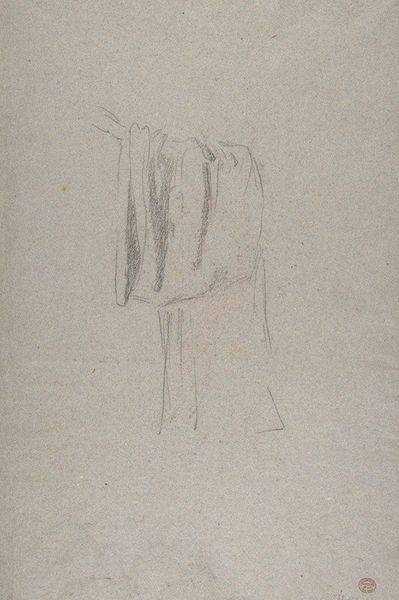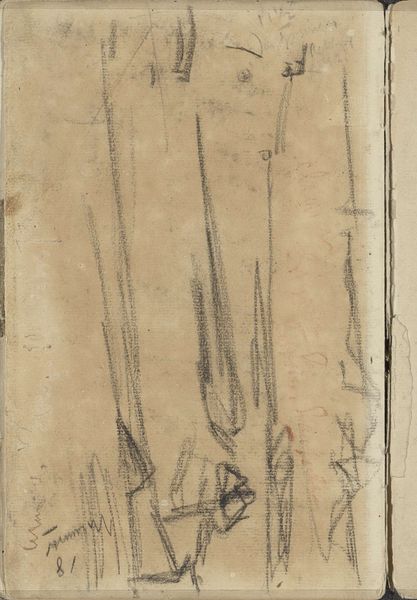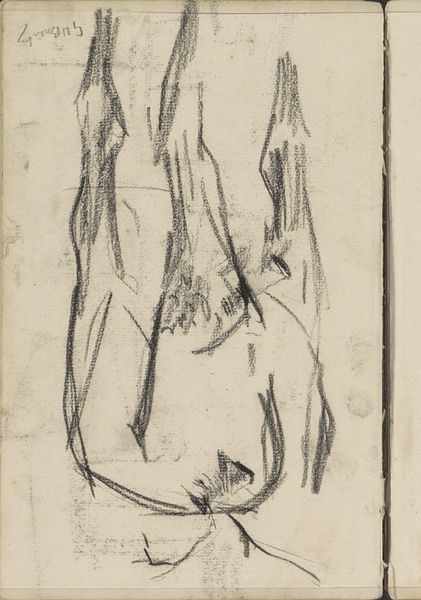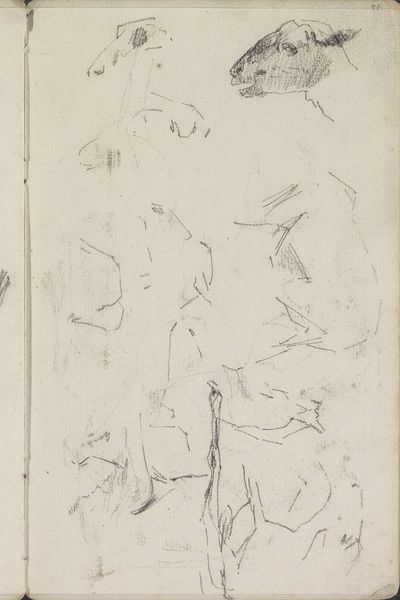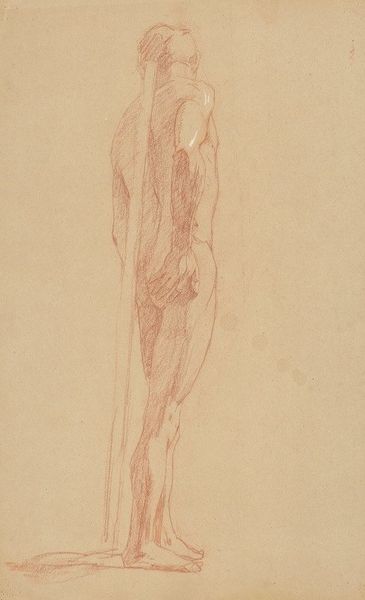
Copyright: Public Domain: Artvee
Curator: This pencil drawing, rendered on paper, is Jòzef Simmler’s "Study of the Queen Figure for the Painting ‘Queen Jadwiga’s Oath’" dating back to 1867. The image provides a close examination of the future queen. Editor: It strikes me as incredibly delicate, almost ghostly, in its execution. You see the draped fabric rendered with such precision, but the absence of a fully formed figure behind it adds to the mystery. It makes me think about the weight, both literally and metaphorically, that a queen's garments might carry. Curator: Absolutely. Considering it's a preparatory sketch for a larger history painting, focusing on Queen Jadwiga, Simmler uses the materiality of pencil on paper to investigate the way cloth can define power and femininity. Think about the labor involved in producing fabrics of this caliber during the 19th century. Editor: It's also compelling how he focuses on the folds and texture of the drapery. Cloth has always been integral to communicating social status and identity. Jadwiga, as a female ruler in a male-dominated era, certainly had to negotiate these representations very consciously. What did those choices signify to her contemporaries, and what do they reveal about the construction of female power? Curator: Precisely. The type of paper selected also matters; consider its likely source and preparation process and what its surface allows for with respect to mark-making. Furthermore, we could look at how the mass production of pencils might make studies like this accessible to more artists. This sketch provides a fascinating glimpse into the behind-the-scenes work needed to manufacture grand historical narratives, questioning notions of singular genius by pointing towards collaborative and industrial contexts. Editor: Indeed, placing it within a historical context, it evokes deeper reflections on nationhood, identity, and representation. Looking at this sketch prompts a discussion of female agency, political representation, and the gaze of history itself. How do artworks like this reinforce or challenge existing power structures? Curator: Viewing the sketch today offers valuable insights into how material culture helped to both shape and portray historical narratives. Simmler’s dedication to texture brings a sensitivity to labor which is all too often erased by academic art. Editor: Ultimately, this small work holds tremendous value. Its careful examination invites conversation beyond art, into the broader realm of cultural identity.
Comments
No comments
Be the first to comment and join the conversation on the ultimate creative platform.
